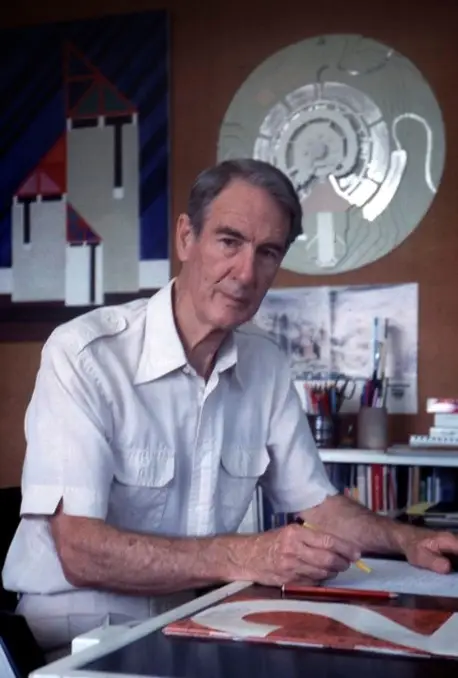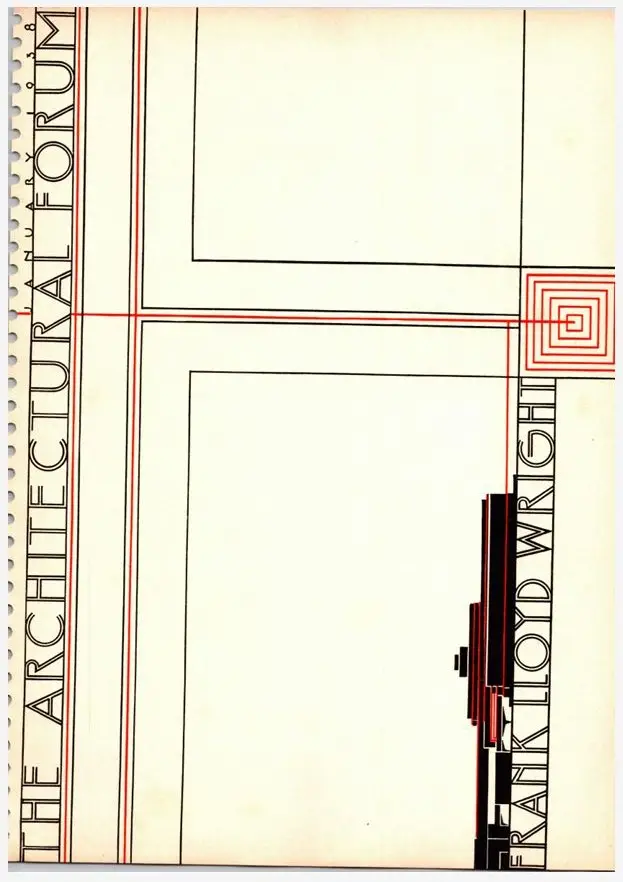


Graham Francis De GRUCHY, FAIA (1924-2025) was born in Johannesburg, South Africa on the 11th February 1924. As a schoolboy he was inspired to be an architect after seeing a famous 1938 issue of The Architectural Forum with publication of Frank Lloyd Wright’s work including Falling Water. In 1943 he enrolled in the architecture course at Johannesburg’s University of Witwatersrand, but after eighteen months, he enlisted for service with the South African Air Force. When completing his training in Egypt, he recalled his excitement seeing the pyramids as a dorsel gunner in a B-24 Liberator bomber. From a base in southern Italy, he spent two weeks’ leave before joining his squadron visiting Naples and Rome. After five bombing missions, the war ended. Thereafter based in the Veneto, he spent his weekends exploring Venice with army ducks cluttering the Grand Canal but St Mark’s was a source of wonder. For three months he studied psychology in Florence at a South African sponsored University opened in a former palace. Enroute home, he drove the full length of Italy before being temporarily based in Almarza, Egypt, where he edited the Almarza Camel, a local newspaper for the forces. He again took advantage of the opportunity for further architectural sightseeing including the Valley of the Kings, the Mortuary Temple of Hatshepsut and other temples at Luxor.
On returning to South Africa, he completed his architecture course in 1947-48. After registering as an architect in 1949, he was admitted to membership of the South African Institute of Architects in 1950 before commencing private practice designing houses as well as other buildings which were published and attracted favourable attention. In 1954, he moved to a banana farm in Eastern Transvaal where he designed the modern Bushman Rock Hotel at the entrance to the Kruger National Park, acknowledged in Clive Chipkin’s Johannesburg Transition (2008) for Graham’s ability to “infuse relatively simple and direct architectural forms with an approproate sense of place, using gumpole structure, white bagged walls and changes of scale.” After he returned to practice in Johannesburg, and was appointed as a lecturer at the University. He taught design and hosted visitors who included Buckminster Fuller and Richard Neutra. His wife Joy, an economist, worked for the South African Institute of Race Relations. Following the Sharpeville massacre in 1960 and fearful of being placed under house arrest, the family moved to London where he worked for the Greater London Council on housing developments which included the well-regarded Kingswood Estate. After touring much of Europe, but not liking the London climate, the family migrated in 1962 to Queensland where he joined the Royal Australian Institute of Architects and was employed as a Design Architect for the Works Department. He worked on projects which included: a hospital at Tara; the George St Government Precinct working with the town planner John Wheeler, which led to the Executive Building (the first of three blocks envisaged and demonstrated in a model which Graham made); and Queen’s Gardens, both the design as built and an unrealised earlier proposal which included parking below the Gardens which may have secured a long-term future as Government offices for the outstanding public buildings adjacent.
In 1963, Graham accepted a position as Lecturer in the Architecture Department at the University of Queensland where he spent the rest of his career with a passion for the urban and architectural design of Brisbane. He was promoted to Reader in 1968 and served as Dean of the Faculty from 1981 until his retirement in 1989. While at the University, he undertook post graduate study including a Bachelor of Architecture degree (1965); a Master of Architecture (1966) on medium density, low-rise housing; a Diploma of Town and Regional Planning (1968) and a Doctor of Philosophy (1977) with “A study of change in the built environment, with special reference to urban and architectural design in Brisbane’s central business district core and core periphery”. His research was based on ideas for Brisbane, which influenced his choice of student design projects, publication of two architectural guides to Brisbane: Architecture in Brisbane (1988) and Architecture and Urban Design in Brisbane (2012); and consultancies for the Australian Heritage Commission. Throughout his career he entered architectural competitions, in South Africa and in Brisbane: the competitions for the Great Hall at the University of Queensland (1963), the High Court of Australia (1972) and Canberra’s Parliament House (1979), as well as annual design competitions associated with the Brisbane Telegraph Homes Show in which he and colleagues at the University won awards. Throughout his career, both in Transvaal, London and Queensland, he experimented with the design of dwellings, including several houses in both South Africa and in Brisbane as well as a small block of flats for his family’s use and for architect tenants who included John Dalton and Dan Callaghan. Many of these dwellings were published.
He was involved with a pioneering interior design shop, Craftsman’s Market, which Joy de Gruchy opened at Toowong and which introduced Brisbane residents to Marimekko fabrics and modern design both Scandanavian and Graham’s own designs for furniture. At the University of Queensland he taught interior design, including an annual student design project for a chair which resulted in Russell Hall’s curved corrugated iron chair which Geoffrey Bawa later adopted. In 1976 he became a member of the Society of Interior Designers of Australia. From 1969 for almost a decade, Joy and Graham de Gruchy with the University of Queensland co-sponsored the acquisitive Darnell-de Gruchy Art Prize to stimulate the appreciation of modern art and build the University’s collection now held by the University of Queensland Art Museum. Graham de Gruchy was also a generous benefactor for the University’s which holds records relating to his career. In 2017, he received a long overdue Fellowship of the Australian Institute of Architects and in 2024 he celebrated his 100th birthday. He died in Brisbane on 28th February 2025.
Obituary written by Don Watson.
